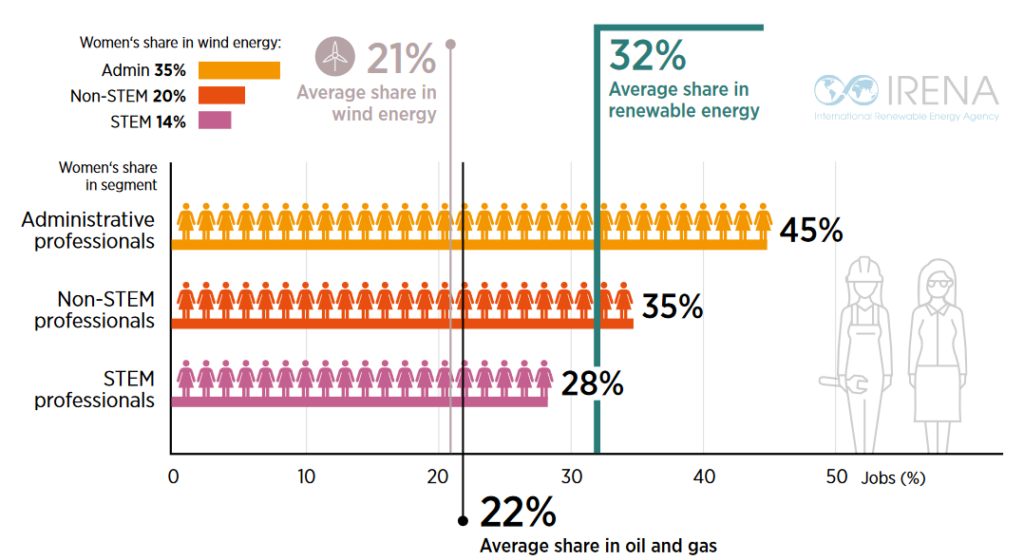The Blueprint for Greener Companies: Re-skilling
Greener Companies
22 December 2021 – by Viktor Tachev
Among the foremost challenges organisations face to become greener companies is equipping their teams with skills needed for the energy transition. Human capital is becoming as decisive as ever and will be well into the future of a carbon-free world. Eco-friendly business practices are also very important to become a green business.
The Need for Re-skilling for Environmental Sustainability and for Reducing Greenhouse Gas Emissions and Carbon Footprint
There are already over 12 million jobs in clean energy today, with further booms to come. The International Renewable Energy Agency (IRENA) pins jobs within the renewables sector at 25 million by 2030. Projections see solar and wind generating the most jobs far into the future. This re-skilling is necessary for reducing direct and indirect greenhouse gas emissions and carbon emissions. Sustainable practices should be adopted, such as using sustainable materials and sustainable packaging to create sustainable products.
Challenges for Sustainable Companies
Environmental and climate benefits aside, the transition will also present challenges for environmentally conscious companies. To fill gaps and achieve net positive environmental impact, fossil fuel majors, state-owned utilities, and national oil companies (NOCs) will have to prepare for the transition adequately. There are several ways to achieve this. Capitalising on the skills and synergies across their existing operations, attracting talent from greener companies and re- and up-skilling would be a start.

The Re-skilling Process in Asia and the World
While Asia is leading global job creation in clean energy, its re-skilling pace is lacking, as it is the world over. Between 2016–2020, Asia faced a significant surplus of low-skilled workers and a semi- and high-skilled jobs shortage.
To offer some perspective, the European Union (EU), one of the most developed renewable energy markets globally, will need to re-skill 18 million workers in the coming years. Sweden, for example, needs 28,000 workers over the next five years to install new clean energy infrastructure.
Green jobs are expected to explode in Asia and reach 14.2 million by 2030. However, with Asia’s relatively young renewable energy market and the need for re-skilling and up-skilling, the challenges compared to the EU will be many.

Becoming a Greener Company Need Not Be Challenging
Using the International Labour Organisation’s (ILO) criteria, re-skilling and up-skill trends will differ depending on the complexity of the occupation. At the very least, green companies should plan for short and long periods for medium-skilled jobs like wind turbine and solar PV installation. Highly-skilled occupations like energy auditors and systems designers will be much grander in scale and time.

The Transition from Fossil Fuel Companies to Eco-friendly Companies
For fossil fuel companies, easing the teething period to become greener companies could be aided by emphasising the industry’s transferrable skills. Close to seven in ten jobs in the oil and gas industry overlap with the skills needed in the renewable energy industry.
Similarly, the coal mining industry has workers with in-demand and attractive skills for the renewable energy industry. Mechanics working under challenging conditions in coal mines would be valuable assets for greener companies transitioning to renewables. This would include, for example, installing offshore wind sites out at sea.
The good news is that a large chunk of the workforce needed for the clean energy transition is within the easily trainable groups for workers and technicians alike.

A Focus on Women
For good reasons, transitioning companies and already green companies could speed up and ease their transitions by being more inclusive. Women across the globe can provide a considerable talent pool of experience and knowledge. So far, much of this remains untapped. Though things are changing slowly, renewable jobs show an uptick in better gender balances than fossil fuels.

Developing Technologies and Higher Skills
Other industries are still rapidly developing, which will dictate new skills. Green hydrogen, smart grids and power-to-X technologies are the most in-demand sectors. Novel and developing sectors like these may shift the employment structures toward more high-skilled and qualified workers.
Digital knowledge and computer skills across the board from low- to high-skill positions would also be essential for the clean energy transition. This, though, is already proving to be a precarious issue, with 76% of CEOs in the energy sector anxious about digital skills being low.
Making the First Moves
Transforming companies into green champions isn’t likely to materialise overnight. The first moves, though, are pertinent. Creating and future-proofing the renewable energy sector by investing in a diverse and flexible workforce is a start. While this remains difficult in the initial stages of any new technology, it is possible with proper policy coherence and support for the future workforce of the clean energy transition.

by Viktor Tachev
Viktor has years of experience in financial markets and energy finance, working as a marketing consultant and content creator for leading institutions, NGOs, and tech startups. He is a regular contributor to knowledge hubs and magazines, tackling the latest trends in sustainability and green energy.
Read more



